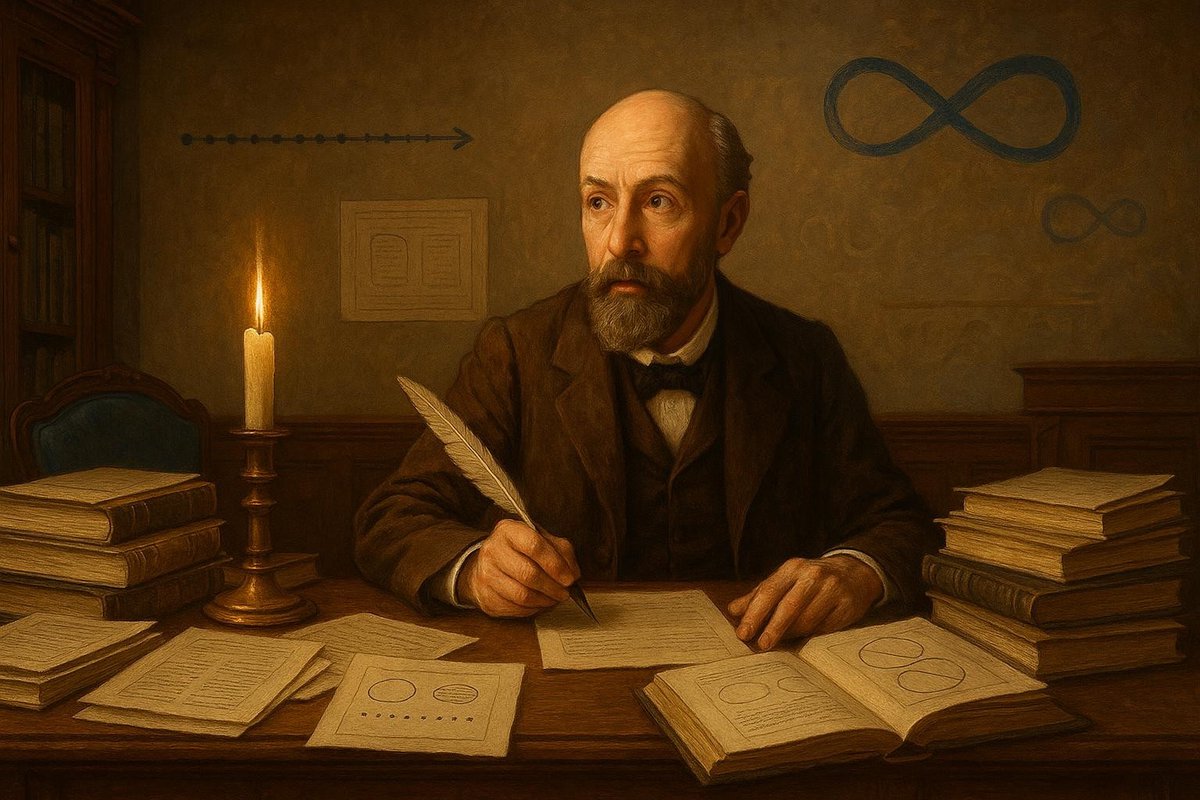
Have you ever stopped to wonder how infinite infinity truly is? It’s a tantalizing question, and one that’s not as simple as it appears at first glance. Imagine trying to count all the grains of sand on a beach — now multiply that by the stars in the sky. This is the kind of mind-bending scale Georg Cantor tackled when he revolutionized our understanding of the infinite in the late 19th century.
Unpacking the Question: How Infinite is Infinity?
Before Cantor, infinity was often viewed as an abstract, untouchable concept. In the time of Aristotle, infinity was a philosophical idea, something beyond human comprehension. But Cantor dared to measure the unmeasurable. With a curious mind and a set of number lines, he embarked on a journey to categorize different sizes of infinity.
- Cantor showed that while the set of natural numbers is infinite, the set of real numbers is uncountably infinite.
- He distinguished between countable infinity (like counting sheep) and uncountable infinity (like identifying all real numbers).
- This differentiation was groundbreaking, suggesting some infinities are larger than others.
Cantor’s ideas shook the mathematical world to its core. His realization that not all infinities are equal was like discovering new dimensions within the fabric of mathematics itself. This wasn’t just a theoretical victory but a conceptual leap that opened the doors to new mathematical landscapes.
Surprising Facts: Beyond Countable Limits
What makes Cantor’s exploration so surprising is how it defied the intuitive logic of the day. If you think of infinity as a limitless expanse, how can there be more than one magnitude of infinity? Yet, Cantor’s work demonstrated precisely that.
- Cantor introduced the idea of a power set, which illuminates the hierarchy of infinities.
- His diagonal argument showed that real numbers can’t be listed in a complete sequence, unlike natural numbers.
- This argument provided a crystal-clear lens to view infinity in a new light, sparking discussions and debates throughout the mathematical community.
Interestingly, many mathematicians initially resisted Cantor’s ideas, including the respected Henri Poincaré, who reportedly called set theory a ‘disease’ from which mathematics would recover. Despite the initial backlash, Cantor’s ideas gradually gained acceptance, and today, they form the backbone of modern set theory.
What Science Says: The Mathematical Revelation
Cantor’s theories didn’t just pause at philosophical reflection; they were fiercely debated in scientific circles. The framework he developed laid the groundwork for much of modern mathematics and even influenced fields beyond, such as computer science and logic.
- His concepts of cardinality and ordinality provided new ways to think about numbers and order.
- By formalizing infinity, Cantor allowed mathematicians to rigorously tackle problems involving infinite sets.
- This progress led to significant advancements in topology and analysis.
Moreover, Cantor’s work sparked a philosophical debate about the nature of reality and our understanding of the universe. Do these various infinities exist outside our mathematical models, or are they purely constructs of the human mind? This is a question that continues to intrigue both mathematicians and philosophers alike.
What It Means for Us: The Legacy of Infinite Exploration
Georg Cantor’s exploration of infinity has profound implications for both mathematics and our broader understanding of reality. The elegance of his ideas continues to inspire those who dare to think beyond the finite.
- In education, Cantor’s theories are crucial in teaching advanced mathematics, providing a foundation for understanding complex mathematical structures.
- His work also influences philosophical debates about the nature of the universe and the limits of human understanding.
- The notion of different infinities invites us to question the limits of what we can know and comprehend.
As we reflect on Cantor’s contributions, we realize that mathematics is more than numbers and equations; it’s a journey into the realms of the unknown, driven by curiosity and the courage to challenge convention. Cantor’s infinite imagination invites us to explore the mysteries of the cosmos with a new lens.
In closing, Georg Cantor’s work reminds us that the simplest questions often lead to the most profound insights. By exploring the infinite, he transformed not just mathematics, but our entire view of the universe.
Fuel Someone Else’s Curiosity
Let Georg Cantor’s story inspire us to dive deeper into our own curiosities. Share this article, discuss it with friends, and explore how infinity shapes the world we live in. Who knows what questions might lead to the next mathematical revolution?

Leave a Reply